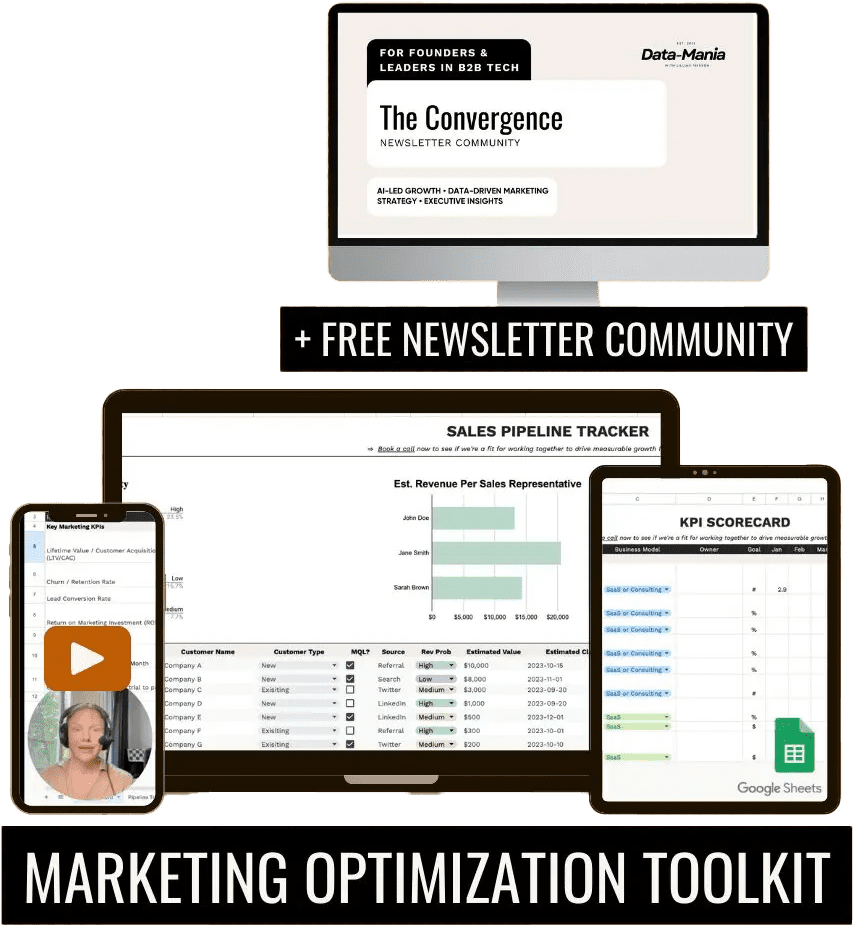Want to grow your startup faster? Build the right marketing tech stack. The right tools can save time, cut costs, and boost sales by automating tasks and improving efficiency. Here’s a simple checklist to get started:
- CRM Systems: Manage customer data with tools like HubSpot (free) or Pipedrive ($12.50/month).
- Email Marketing: Automate campaigns using Mailchimp (free for up to 2,000 contacts) or SendinBlue ($25/month).
- Analytics: Track performance with free tools like Google Analytics, Mixpanel, and Hotjar.
- Social Media: Schedule posts with Buffer (free or $6/month) or Hootsuite ($99/month).
- Content Management: Use WordPress (free) for scalable content creation.
Pro Tip: Integrate your tools for better results. Use platforms with native integrations or middleware like Zapier to connect systems. Regularly review your stack to ensure it aligns with your growth.
This guide breaks down affordable, effective tools and strategies to help your startup succeed.
How to Build a Martech Stack That Works for You
Key Elements of a Marketing Tech Stack
Creating a marketing tech stack that works well for your startup means choosing tools that not only support growth but also stay within budget. Here’s a look at the core tools every startup should consider.
CRM Systems
A Customer Relationship Management (CRM) system keeps all your customer data in one place, making it easier to manage and act on. Here are a few options to consider:
- HubSpot CRM (Free): Great for managing contacts.
- Zoho CRM ($14/user/month): Offers pipeline visualization.
- Pipedrive ($12.50/user/month): Includes basic automation features.
- Freshsales ($15/user/month): Adds email integration to the mix.
Once your customer data is in order, the next step is building stronger relationships through email marketing.
Email Marketing Tools
The right email marketing platform can automate your campaigns and track results. Look for tools with these features:
- Audience Segmentation: Send targeted messages to specific groups.
- Automation: Set up workflows like welcome emails or drip campaigns.
- Analytics: Monitor open rates, clicks, and conversions.
- Personalization: Tailor emails based on user behavior.
For beginners, Mailchimp’s free plan (up to 2,000 contacts) is a solid choice. If you need more advanced workflows, try SendinBlue starting at $25/month.
Analytics Tools
Tracking your efforts is key to understanding what works. Here are some tools to help you measure performance:
| Metric | Recommended Tool |
|---|---|
| Website Traffic | Google Analytics (Free) |
| User Engagement | Mixpanel (Free plan) |
| Conversion Rates | Amplitude (Free plan) |
| Customer Journey | Hotjar (Free plan) |
These tools help you gather insights that can guide your marketing strategy and optimize your tech stack.
sbb-itb-e8c8399
Social Media and Content Tools
Running social media and creating content effectively is essential for startups working with tight resources. Here’s a look at the tools that can help you make a big impact without breaking the bank.
Social Media Platforms
Social media management tools streamline tasks like scheduling posts and tracking performance. Here’s a quick comparison:
| Platform | Key Features | Price | Ideal For |
|---|---|---|---|
| Buffer | Scheduling, Basic Analytics | Free, $6/channel/mo | Small teams |
| Hootsuite | Social listening, Collaboration | $99/month | Growing startups |
| Sprout Social | Advanced analytics, CRM tools | $249/month | Expanding companies |
Once your social accounts are running smoothly, it’s time to think about content creation tools that align with these platforms.
Content Platforms
Your content management system (CMS) should work well with your social tools to keep your messaging consistent. For example, WordPress (free and open-source) powers nearly half of all websites and offers over 59,000 plugins to grow alongside your needs.
When selecting a CMS, look for features like:
- Built-in SEO capabilities
- API integrations for flexibility
- Pricing that scales with your business
- Simple, user-friendly editors
Opt for CMS platforms that also include analytics and integration options to keep everything connected.
Integration and Growth
Tool Integration
Once you’ve selected your core tools, the next step is ensuring they work together effectively. Companies with connected tech stacks experience 131% higher revenue growth [1].
"The key to a scalable marketing tech stack is not just choosing the right tools, but ensuring they work together seamlessly", says Scott Brinker, VP Platform Ecosystem at HubSpot, during the MarTech Conference 2024.
Start by focusing on platforms that offer native integrations with your existing CRM. If native options aren’t available, middleware solutions like Zapier or Make can help connect your systems. For more complex needs, APIs may be the way to go.
Here’s a quick comparison to guide your integration strategy:
| Method | Best For | Setup Time | Cost |
|---|---|---|---|
| Native Integrations | Core marketing tools | 1-2 hours | Usually included |
| Zapier/Make | Custom workflows | 2-4 hours | $0-200/month |
| API Integration | Advanced needs | 1-2 weeks | $500-2000+ |
Planning for Expansion
Improving integration boosts efficiency, but it’s also important to prepare your tech stack for growth. According to the 2024 Startup Genome report, early-stage companies with integrated systems grow 40% faster [4].
To ensure your stack can handle future demands:
- Choose cloud-based platforms: Tools like Salesforce offer flexible pricing and features that grow with your business.
- Automate data validation: Set up rules to keep your data clean and reliable.
- Document everything: Create integration maps to track how tools connect.
- Perform regular audits: Schedule quarterly reviews to catch potential issues before they escalate.
Using tools like Google Analytics as your central hub can help maintain consistent data flow as you expand your marketing stack. This approach ensures your tools grow with your business while staying efficient and connected.
Conclusion
Creating a well-rounded marketing tech stack is key to early-stage startup growth. Choosing the right tools and ensuring they work seamlessly together sets the stage for long-term success while leaving room for growth down the line.
Here are four priorities to keep in mind when building your stack:
- Core functionality: Focus on tools that directly impact revenue and support critical marketing efforts.
- Integration: Opt for platforms that easily connect and share data with one another.
- Budget-friendly options: Take advantage of free plans or startup-focused pricing to manage costs.
- Room for growth: Go for cloud-based tools that can adapt as your business expands.
Schedule quarterly reviews of your tech stack to ensure it aligns with your evolving goals. Regular evaluations help you stay on track and keep your marketing tools delivering results as your startup grows.
Related Blog Posts
- When Should Startups Hire a Fractional CMO?
- How to Build a SaaS Marketing Strategy from Scratch
- Collaborative Lead Scoring for B2B Teams
- How Data Improves ABM Segmentation ROI





